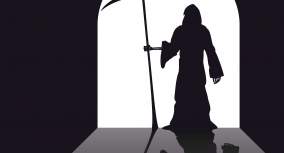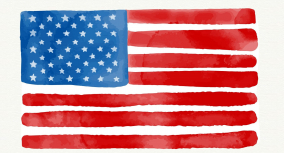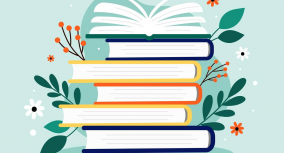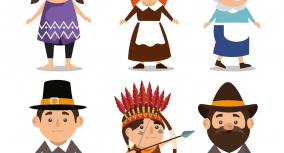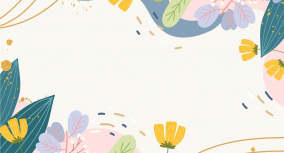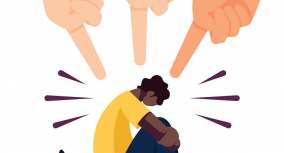Symbolism in literature conveys both literal and figurative meanings, helping readers better understand the text. It can be a word, object, setting, or a subtle feature like color that draws readers’ attention to a central message. Literary symbolism can be straightforward or require interpretation based on context and culture.
For instance, when you see a white dove, do you perceive it merely as a bird, or does it evoke ideas of peace and freedom? As the famous semiotician and novelist, Umberto Eco, noted in his The Role of the Reader, symbols in literature do not stand alone. They gain meaning through the reader’s interaction with the narrative. In this article, our custom writing professionals will answer the question, “What is symbolism in literature?”
Besides, you’ll discover:
- Types of symbolism
- How to interpret symbol meaning in literature
- Symbolism examples and more
Ready to become an expert in literary symbolism? Let’s start!
🔣 What Is a Symbol in Literature
In art and literature, a symbol is typically an abstract idea conveyed through an object. It can be a plant, a building, an animal, or even a person. Anything that represents a bigger idea is called symbolic. For example:
- A red rose symbolizes love.
- A raven is a symbol of death and doom.
- The color white usually denotes purity.
- The color red stands for passion.
In his poem called Rain, W. H. Davies uses rain as a poetic symbol of social stratification. Rain first falls on the upper leaves, and then the drops roll down to the lower ones. It means that the upper class gets more benefits while the lower class gets less.
Symbols are everywhere, not just in literature but in daily life. Some are universally understood, while others hold meaning only for specific groups. For instance, traffic lights are a perfect everyday symbol: red means stop, while green signals it’s time to go.
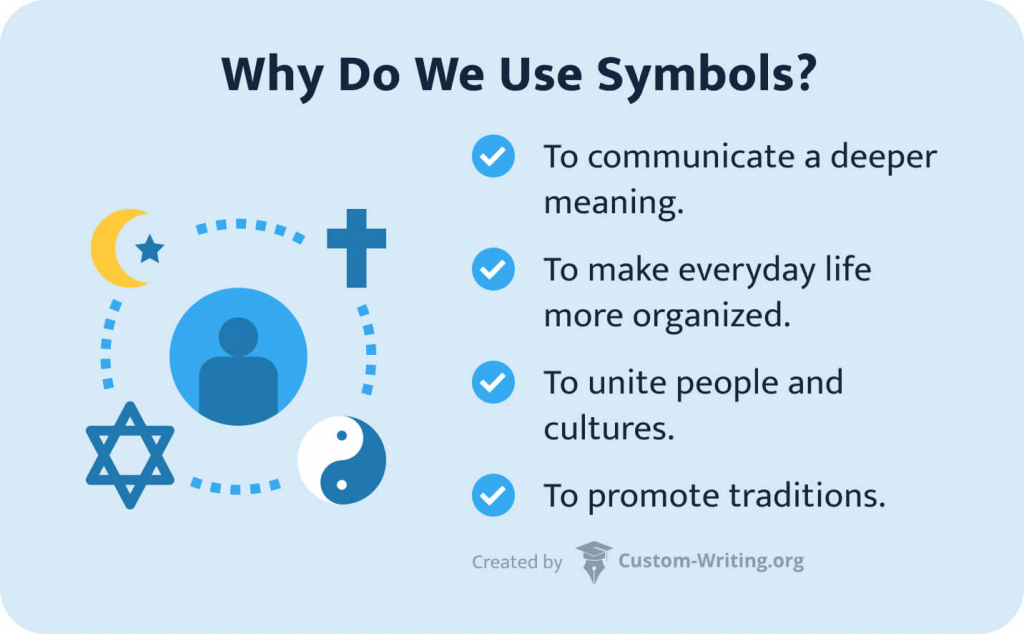
🔥 Why Is Symbolism Important in Literature?
You might be asking yourself: Why do authors use symbolism? What does it help to convey? The matter is that symbols can help blur the line between reality and fiction, aiding in readers’ immersion into the story and helping them grasp meanings that are impossible to put directly into words.
But there are also many other reasons for employing this literary device. Here’s why authors use symbolism:
- To immerse the audience into the plot. The use of symbolic elements helps connect reality and fiction. In such a way, readers feel like they are inside the story.
- To present things poetically. Surely, an author can state the message of their stories directly, but that won’t be very compelling and exciting. Literary devices such as symbols make our reading experience pleasurable.
- To speak to people’s unconscious and evoke emotions. Have you ever read the story and cried because you felt empathy for the main character? It might be because of the author’s effective use of symbols.
- To create complexity, depth, and nuance. The implementation of symbolism makes readers think about profound themes and issues. Often, symbols allow us to grasp a meaning that we can’t put into words.
- To organize and simplify meaning. A single well-placed symbol can communicate an idea more efficiently than paragraphs of explanations. Just like icons on a computer screen neatly represent various programs, symbols in literature can encapsulate complex concepts.
🕊️ Types of Symbolism
Not all symbols function the same way. Some are universal, while others are unique to a specific context or character. Understanding them will help you better grasp an author’s message and appreciate the depth of literary works.
Below, we’ll explore different types of symbolism, including abstract, accidental, contextual, universal, culturally specific symbols, and symbolic characters.
Abstract Symbolism
An abstract symbol in literature doesn’t have an obvious connection between its actual and figurative meanings. It’s only a representation of a thing without any physical basis. For example, the color purple may be associated with nobility, though it doesn’t refer to a nobleman directly. It’s only an indirect way to hint that a person belongs to nobility.
Accidental Symbolism
Accidental symbolism occurs in literature when an object or artifact unintentionally gains symbolic significance within a story and becomes deeply meaningful to a character. As a result, the character develops a close relationship with that object and experiences a change in conduct or perception.
This form of symbolism manifests in 2 main ways:
- New emotional connections. The character may develop new emotional links of positive and negative nature with the symbolic object, thus transforming it from a regular thing or concept into something more meaningful.
- Impact on the character. The newly appeared symbol would affects the character’s judgment and actions because of the associations it carries.
You can detect accidental symbolism during literary analysis through the following pointers:
- Repeated references. The object that has accidentally become a symbol in the narrative will recur in various parts of the plot.
- Specific reactions. Study the text for the character’s reactions to certain objects or events: strong reactions suggest symbolic importance.
- Surrounding context. Analyze the broader context of the identified symbol to understand its value and contribution to the narrative.
By using these clues, you’re sure to detect accidental symbolism and incorporate this vital, meaningful aspect into your analysis.
Contextual Symbol
A contextual symbol (also called a private symbol) exists only within the context of a particular story. To be more precise, it can be a word, an object, or a setting that conveys a specific meaning, significant for the story’s message.
The picture of Dorian Gray in the novel of the same name is a perfect example of a contextual symbol. It symbolizes the soul or the inner self of the protagonist. This symbol makes sense only in this novel because it doesn’t mean that any portrait literally contains a person’s soul.
Universal Symbol
A universal (or a conventional) symbol has a meaning that is well-known to the whole society. People all around the world can identify and interpret such symbols. For example:
- The Christian cross is universally associated with Christianity.
- A white dove with an olive branch symbolizes peace and hope.
These symbols transcend cultural and linguistic barriers and serve as powerful tools that convey deep and immediate meaning.
Culturally Specific Symbols
Unlike universal symbols, culturally specific symbols require a deeper understanding of a particular society’s norms, customs, and values. Studying them gives an in-depth understanding of a culture’s unique worldview and traditions.
Here are a couple of symbols you might find in literature:
- Marriage proposal. While Western cultures favor a ring as a traditional proposal symbol, men in Wales present a special lovespoon as a token of commitment. In Thailand, a gift made of gold is equal to a marriage proposal.
- Seasonal festivities. Each culture has a history of living in a specific location, so its relationships with local nature are also a source of deep symbolism. For instance, the Japanese celebrate the Sakura blossom as a national holiday every year. This festival represents renewal and the fleeting nature of life.
As you can see, various symbols acquire diverse meanings depending on the cultural context. Understanding them enriches literary analysis and gives the analyst a unique glimpse of cultural richness and diversity.
Symbolic Character
A symbolic character is any character of the story used to reveal its profound theme. Usually, authors use it sparingly, giving the readers a glimpse into this character’s true essence and symbolic meaning only at the end of the story.
Aslan from The Chronicles of Narnia is an example of a symbolic character. He is a representation of God or Jesus.
🤔 How to Find Out What a Symbol Means
Don’t know how to find symbols in a literary text? Have a look at this step-by-step guide on how to detect and interpret them.
1. Carefully read the passage.
Single out everything that stands out for you. These can be both objects and concepts. Be careful as newbies tend to consider almost everything as a symbol. Real symbols are repeated or emphasized throughout the whole text all the time.
2. Identify all the possible themes connected to this object.
Think about universal topics and meanings that come into mind. You can also create logical connections between the chosen symbol and your ideas. To do it:
- Analyze the object
- Define its main characteristics
- Think about the importance of these aspects
- Identify themes in the text
- Link them to the text message and the discussed themes
3. Present your findings
You can do it using the T.E.E.L structure:
- T: Technique used by the author
- E: Example from the text
- E: Effect this technique produces on your comprehension of the story
- L: Link to the text and how it supports your arguments
⭐ Symbols vs Other Literary Devices: How to Distinguish
Do you know that symbolism closely resembles many other literary devices? For example, students often confuse symbols with:
- imagery
- iconography
- metaphor
- allegory
To learn the difference between them, read the following sections.
Imagery vs Symbolism
Imagery is the use of literary devices to create a mental image or a specific feeling. In contrast, symbolism is more about additional meanings a word or object may have. It doesn’t necessarily presuppose a focus on a visual aspect.
Iconography and Symbolism
Symbolism deals with specific images or signs meaningful to the members of a particular group. Iconography is associated with the use of visual symbols to reveal complex themes or ideas that are significant to different cultures.
Symbolism vs Metaphor
A metaphor is a type of analogy that is used to demonstrate similarity to something. That’s why if you want to compare two unrelated things, you might want to use this literary device. If you wish to represent a thing as something else, you can resort to symbolism.
Allegory vs Symbolism
Allegory is characterized by a profound analysis of the object, idea, or story. It often conveys the moral of the story. In contrast, when the author uses symbolism, they intend to convey a specific emotion or mood.
📚 Symbolism in Literature: Examples
It’s time to put theory into practice and deal with symbolism directly. We’ve collected examples of the most common symbols in literature for you. Want to learn about their meanings? Check out the following section.
Color Symbols in Literature—The Great Gatsby & Other Works
Colors have always taken a special place in the symbolic inventory of poets and writers. The use of color symbols can do the following:
- Set the right tone for the narrative.
- Paint a vivid picture of the character’s mood with a few strokes.
- Reveal emotions and feelings.
- Aid the visualization of complex scenes and relationships.
An illustrative case of color symbolism is the use of color green in Fitzgerald’s The Great Gatsby. Multiple references to green as a color of hopes and dreams are woven into the narrative, such as the green light at the end of Daisy’s dock or the green traffic lights. Fitzgerald used green to point to the unattainable ambitions and unfulfilled promises of the American Dream, following which inevitably leads to tragedy. Welcome to explore the novel’s rich symbolism in our The Great Gatsby guide.
Another example of the symbolic use of green is Sir Gawain and the Green Knight, where green stands for magic and supernatural powers. It also symbolizes nature and youth, with numerous metaphoric implications and meanings. You may find a more nuanced analysis of this poem’s symbolism in our Sir Gawain and the Green Knight study guide.
Fire Symbolism—Barn Burning, Frankenstein, & More
Fire as a symbol has various functions. It can have both positive and negative meanings. Authors use fire symbolism in literature to:
- Evoke feelings of anger and fear in the readers.
- Create associations with death or destruction.
- Make an allusion to a phoenix and the issue of rebirth and renewal.
A perfect example of the fire symbol can be found in Faulkner’s short story Barn Burning. There, fire represents duality: it can be used to warm a family or to bring destruction (see our Barn Burning study guide for more information.)
In Frankenstein, fire symbolizes the power of nature. The aspect of duality is also present here. Fire is connected with life creation and simultaneously becomes a punishment. Feel free to check out our Frankenstein study guide to learn more.
Nature Symbolism: A Good Man Is Hard to Find & Other Works
The symbolism of nature in literature conveys hope for a new life and the power of the natural world’s forces. In both prose and poetry, nature is associated with the physical world, and it can take various forms:
- as a separate entity that contrasts with human essence
- a reflection of a character’s inner state
- something to be protected
- a threat that characters struggle against
There are numerous examples of nature symbolism in literature. In A Good Man Is Hard to Find, it is the sky. The matter is that the protagonist can’t differentiate between right and wrong anymore. The sky (devoid of clouds and sun) represents his inner state: confusion and emptiness. For more info on the short story, see our A Good Man Is Hard to Find study guide.
One more example can be found in Wuthering Heights. Here, moors denote danger as well as freedom and love. You can learn more if you visit our Wuthering Heights study guide.
Rainbow Symbolism in Wordsworth’s My Heart Lips Up
One of the most illustrative examples of rainbow symbolism is the poem of William Wordsworth, My Heart Leaps Up. In it, the rainbow represents the pure, untainted beauty of nature—something best understood by children, whose innocence allows them to see the world without the weight of sin or moral complexity.
Wordsworth reflects on the gradual loss of sincere joy, curiosity, and delight in discovering the beauty that people experience as they age. He also celebrates the clarity of the child’s mind, which captures the beauty of nature and comprehends the essence of the world.
For the poet, young minds are unique in terms of wisdom and appreciation of nature, which is the foundational force for adult character development. By using the rainbow symbol, the poet voices his desire to preserve that child-like purity and insight. He suggests that the key to reclaiming these lost qualities lies in reconnecting with nature and humbly accepting its grandeur over human existence.
Symbols of Death in Hamlet, Night, & Other Works
Almost everyone knows universal symbols of death, such as the color black, a skull, and a raven. However, many less obvious things, such as clocks, cypress trees, and vultures, also represent death symbolism in literature. Usually, they denote:
- Negative emotions and feelings
- A warning or a prophecy, suggesting being more careful and attentive
Sometimes, this imagery may have a more profound meaning. For example, in Hamlet, a skull stands not only for death but also for attachment. Obviously, that person is already dead; that’s why the skull personifies the end of life. But in this very case, it’s also a symbol of Hamlet’s appreciation and gratitude to Yorick. You can find more information about the play in our Hamlet study guide.
In Elie Wiesel’s novel Night, the title is symbolic. It denotes not only death but also helplessness, evil, dismay, and despair. When it gets dark, the Jews are afraid; they feel vulnerable and weak. Feel free to read our Night study guide for more information.
Room & Furnishing Symbolism in The Yellow Wallpaper & Other Works
There is a significant connection between the concepts of a home and a house. Symbolically, both represent a person’s inner self. However, there is an important distinction:
- A home is associated with abstract notions, such as nostalgia, family, or one’s childhood.
- A house, in turn, is related to material matters, such as protection and social interactions.
Consequently, elements related to a house, such as furnishing, may allude to a person’s dreams, fears, and feelings.
For example, the room in The Yellow Wallpaper symbolizes the loneliness and despair of the narrator (check out our The Yellow Wallpaper guide to learn more.) In Kafka’s The Metamorphosis, a woman’s portrait reflects the protagonist’s desires, such as financial stability, romantic relationships, and social status. For more information, you’re welcome to read out The Metamorphosis study guide.
The Symbolism of the Red Room in Jane Eyre
The red room is one of the strongest symbolic elements in Jane Eyre. At first, it becomes the physical tool of Jane’s confinement after she conflicts with John Reed. An initially infuriated girl is quickly overtaken by fear, which causes her to faint in the room. That traumatic experience, as well as a frightening association of the room with her uncle’s death, haunts Jane throughout her life.
The symbolic aspects of the red room’s influence on Jane are as follows:
- The symbolism of the color red. Red is a typical symbol of passion, fear, and anger. In Jane Eyre, it also reflects Jane’s life struggles and challenges.
- Authority and confinement. Initially associated with Jane’s physical confinement, the red room becomes the symbol of limiting authoritarian figures and social restrictions of her historical period.
- Jane’s coming of age. Some experts also associate the red room and red color overall with menstruation, which may symbolize Jane’s premature transition into adult roles and the need to manage complex emotions.
- Relationship challenges. As Jane recollects the red room in the turning moments of her relationships, some critics argue that it is also a symbol of limiting patriarchy.
Only by overcoming the symbolic doom of the red room can Jane embrace her freedom and end her misfortunes. As Jane frees herself from its haunting influence and chooses to be happy, she can finally attain true love and self-fulfillment.
Weapon Symbolism: The Odyssey, The Lottery, & More
Writers often attract readers’ attention to the dual nature of weapons:
- They symbolize power, but they may also represent violence and vengeance.
- A weapon is something that can not only protect but also hurt you.
In The Odyssey, the bow embodies not only Odysseus’ power and leadership but also his desire for having revenge on the suitors. Moreover, if we view this imagery from the perspective of his wife, Penelope, the bow will become the symbol of feminine cunning and intelligence. (Want to know more? Feel free to read our The Odyssey study guide.)
In contrast, the stones in The Lottery denote cruelty. It symbolizes people’s potential for committing acts of violence. You’ll find more information about the short story in our The Lottery study guide.
Accessories & Clothes Symbolism in Othello and Other Works
People choose clothes and accessories to reveal their personalities. Writers and poets alike use these personal attributes to show characters’ true nature. However, they can also symbolize other things:
- A person’s culture, especially if it’s traditional clothing.
- An uncomfortable dress can represent oppression by society.
- Characters can use clothes and accessories to appear as someone they aren’t.
For example, in Othello, the handkerchief is an ambiguous symbol. It represents love, purity, and family ties. At the same time, it symbolizes jealousy and faithlessness. If you want to learn more, you can check out our Othello study guide.
In Maupassant’s short story The Necklace, the titular object reflects the protagonist’s desire to be wealthy. Madame Loisel wanted to pretend that she was a rich lady with high social status. Therefore, the necklace is a symbol of wealth and deception. More information can be found in our The Necklace study guide.
We are very happy that our article was interesting and useful for you. Consider sharing it with your friends; they should also know that symbols are everywhere: in literature, art, and everyday life. Just be attentive, and you’ll find out what each symbol means. We wish you good luck with your imagery investigation!
🔗 Symbols in Literature: Articles
A Good Man Is Hard to Find: Analysis
Flannery O’Connor’s short story is stuffed with symbols and literary devices hidden from first-time readers. The analysis of A Good Man Is Hard to Find aims to shed some light on these details.
In William Faulkner’s Barn Burning, symbolism helps the reader to understand certain emotions and relations in the story. In this article, we will focus on two significant symbols: fire and blood.
Like any other piece of writing, Arthur Miller’s Death of a Salesman contains various literary devices to discuss, symbols to interpret, and motifs to find. That is what this article is all about!
This article explains the symbolism in Frankenstein. The key symbols used by Shelley are fire and light.
There are several symbols in Hamlet that are crucial for understanding the underlying message of the play. They provide a more in-depth look into the characters’ minds, illustrating their emotions and sufferings.
Symbolism in Night plays a crucial role. It helps the reader reveal the author’s hidden ideas and dive deep into the book’s theme. Elie Wiesel discovers two symbols in Night— the fire and the night itself.
Do you want to understand all the aspects of Othello? The symbols can help you with that! In his play, Shakespeare includes various symbols that help him to deliver his message to the reader.
Pride & Prejudice: Themes & Ideas
In the first section, the main themes of the novel are described. The other sections aim to analyze Pride & Prejudice symbolism, imagery, metaphors, and satire.
Sir Gawain and the Green Knight: Symbols
Sir Gawain and the Green Knight symbolism penetrates the entire poem. Nevertheless, there are two symbols that require further analysis. In this article, they will be discussed.
Symbols in The Canterbury Tales: Clothes & Language
Do you know what helps to investigate the piece of literature deeper? What reveals the hidden context and highlights the author’s key ideas? These are the symbols! And The Canterbury Tales include a lot of them.
This article explains the symbols in The Great Gatsby. In the first section, you’ll find the information on the color symbolism of The Great Gatsby. Then follows the information on the story’s setting symbolism.
What is the main theme in The Lottery? What do stones and the black box symbolize? There are so many questions to attend to about this story, so this article is here to help you out!
There are a lot of hidden symbols in The Metamorphosis. They allow readers to discern the novella’s actual meaning and the writer’s intent. This article addresses some of the most dominant symbols in the novella.
The Necklace is one of the most famous short stories that talks about a woman whose dreams of wealth got shattered. The author uses several literary devices, such as metaphors or symbolism, to enhance the reader’s perception.
Being an incredibly talented writer, Homer employed numerous symbols in The Odyssey. They are essential for the readers because they represent the hidden context of the poem.
The Yellow Wallpaper: Analysis
This article contains comprehensive analysis of The Yellow Wallpaper: symbolism of the story, and other literary devices used by Gilman.
This article discusses the main themes and meaningful symbols of the novel. You can also find a few words about motifs in Wuthering Heights, as well as an explanation of the setting and genre.
🔍 References
- The Role of the Reader by Umberto Eco: Google Books
- Embracing the Semiotics of Everyday Things: Research World
- Conventional Symbols in Literature: Deer Valley Unified School District
- Symbolism in Fiction Writing: The Balance Careers
- A Short Guide to Imagery, Symbolism, and Figurative Language: Austin Community College District
- AP English Glossary Of Literary Terms: Piedmont Unified School District
- Literary Techniques: Symbolism: Matrix Education
- Abstract Symbol: Computer Science and Communications Dictionary: Springer
- 40 Common Symbols and Meanings (& How to Use Them): Visme
- What is Symbolism?: Oregon State University
- Symbolism: Del Mar College
- Semiotic Terminology: The University of Vermont
- How 8 Colors Got Their Symbolic Meanings: Live Science
